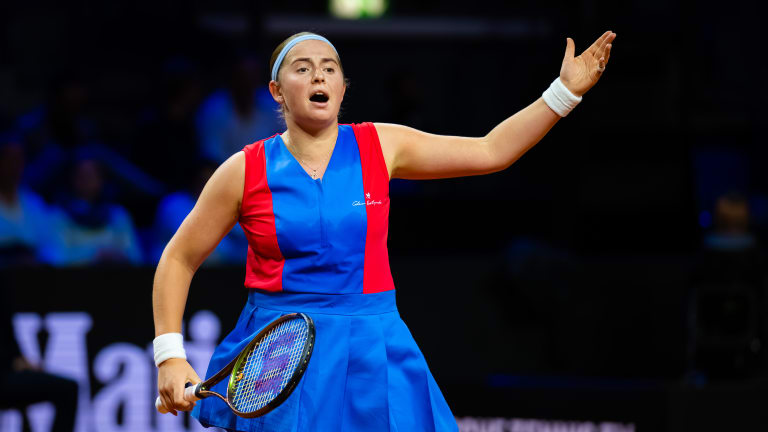My hope for Jelena Ostapenko: Can one of tennis' most skilled players give herself more grace?
By May 10, 2023Miami, USA
Alexandra Eala’s star rises in Miami: “This is a good step towards where I want to be”
By Mar 24, 2025Miami, USA
Alexandra Eala scores the Philippines' biggest WTA win against Jelena Ostapenko in Miami
By Mar 21, 2025The top WTA storylines of the year so far, two months into 2025
By Feb 25, 2025Week In Preview
Sabalenka, Swiatek and Gauff try to restore order, Alcaraz and Djokovic can't avoid each other, and Fonseca returns home
By Feb 16, 2025WTA Doha, Qatar
Amanda Anisimova wins unseeded Doha final showdown against Jelena Ostapenko
By Feb 15, 2025WTA Doha, Qatar
2025 WTA Doha final preview: Amanda Anisimova vs. Jelena Ostapenko
By Feb 14, 2025WTA Doha, Qatar
Amanda Anisimova vs. Jelena Ostapenko: Where to Watch, Doha Final Preview, Betting Odds
By Feb 14, 2025WTA Doha, Qatar
Amanda Anisimova reaches second WTA 1000 final, will face Jelena Ostapenko in Doha
By Feb 14, 2025WTA Doha, Qatar
Jelena Ostapenko routs Iga Swiatek in Doha semifinals
By Feb 14, 2025My hope for Jelena Ostapenko: Can one of tennis' most skilled players give herself more grace?
The Latvian possesses some of tennis' most breathtaking firepower, but is also one of the sport's most mercurial personalities.
Published May 10, 2023
Advertising
Advertising

The level of tennis that took Ostapenko to the 2017 Roland Garros title is part of what makes her a captivating personality.
© 2023 Robert Prange
Advertising
Advertising

Too often, Ostapenko lets negativity intrude and derail her in matches.
© 2023 Robert Prange